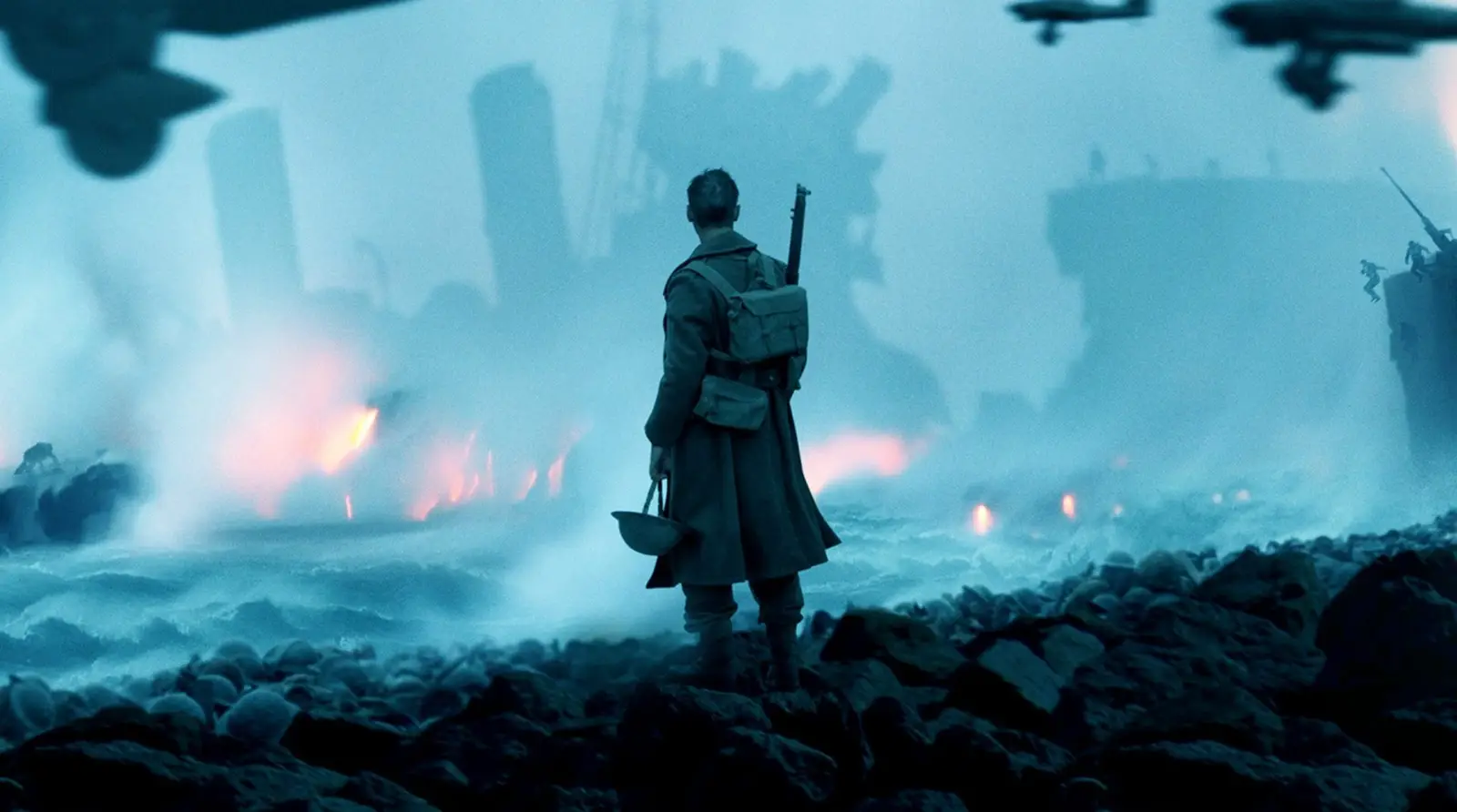The clock is always ticking in Christopher Nolan’s new film, “Dunkirk.” The 107 minute World War II thrill-ride tells the story of the Allies’ defeat at the Battle of Dunkirk, and their harrowing escape from France’s deadly beaches.
Nolan decides to approach this story rather unconventionally. For one, he doesn’t spend time dealing with the larger political aspect of the war. Instead, he keeps it personal, focusing on people. As a result, “Dunkirk” is dripping with edge-of-your-seat tension.
Three different perspectives are given: Land (soldiers attempting to escape the beaches), air (three pilots flying from England to provide air support), and sea (a father and son who feel an obligation to help rescue soldiers in their private vessel). The threads weave themselves together, ultimately meeting at the film’s climactic rescue.
At best, the structure adds depth and narrative layers, rewarding the viewer. For example, a moment seen from afar of a crashed pilot waving an “ok” to his comrade gives the audience relief, only to later find out the crashed pilot was feverishly struggling with a defective cockpit hinge as his craft was rapidly sinking into the sea.
At worst, it’s downright confusing. When every enemy plane looks exactly the same, it’s a distraction to try and figure out if this moment already happened in another story.
That’s just part of the movie’s biggest problem. It’s chock full of set pieces and spectacle, and with Nolan’s cinematography it looks incredible, but these moments rarely add up to more than the sum of their parts.
In war, one doesn’t have time to exchange pleasantries or get to know the life story of the person they’re fighting alongside. Nolan captured this perfectly, because, by the end, I felt like I hardly knew any of the characters. His quest for gritty realism doesn’t always work in his favor, and in this case the character development suffered.
This was also evident in the film’s sound design. Recall “The Dark Knight Rises” and its controversy over Bane’s muffled voice behind his mask, and how Nolan ended up addressing this in the final film. In “Dunkirk,” the audience is berated with a barrage of artillery strikes and jet engines. In IMAX, one is able to get that immersive chair rumbling bass experience, but at the cost of missing potentially important dialogue.
Despite this, the film is host to some terrific performances from the likes of Nolan-veterans Tom Hardy and Cillian Murphy, Mark Rylance, and yes, even Harry Styles in his acting debut. Styles gives a surprisingly subtle and reserved performance, blending in with the rest of the cast seamlessly.
“Dunkirk” is not Christopher Nolan’s best work, but it shows that the director is still willing to experiment and explore unfamiliar territory, and boy is it thrilling.




